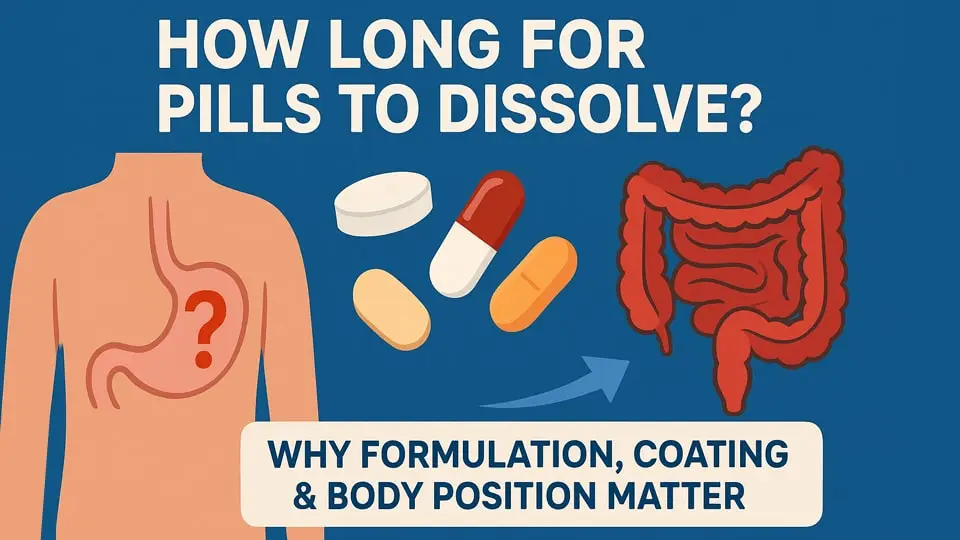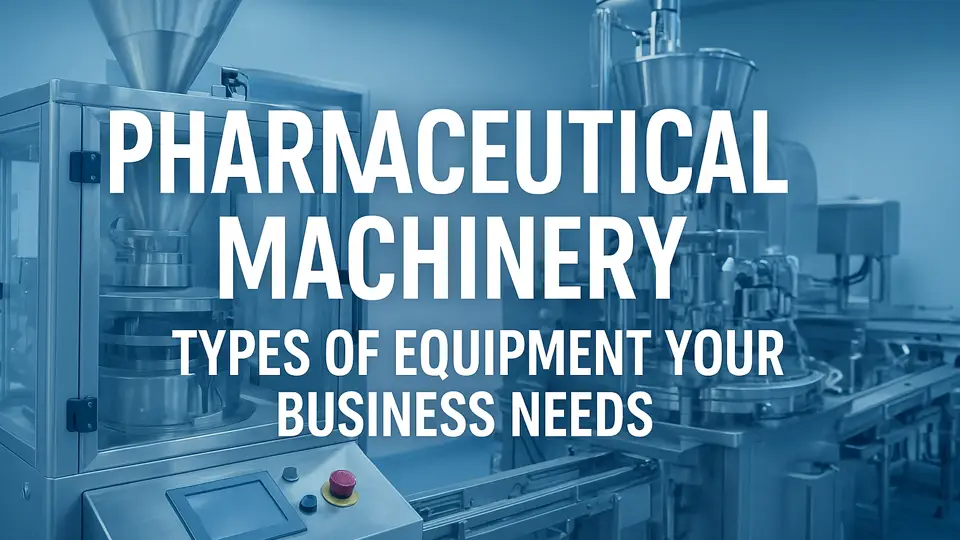
Stick Pack vs Sachet: راهنمای نهایی برای تفاوت های کلیدی
تفاوت های کلیدی بین بسته بندی چسب و بسته بندی ساشه را کشف کنید. با طراحی آنها آشنا شوید, تولید
Choosing the right tablet press machine is a critical decision for any pharmaceutical manufacturer. Tablets remain a cornerstone dosage form thanks to their stability, ease of production, ماندگاری طولانی, and low production cost. A high-quality پرس تبلت (also called a pill press or tableting machine) ensures each tablet is uniform in weight and potency, maximizing dosage accuracy and efficiency. In this comprehensive buyer’s guide, we explain how tablet presses work, compare machine types (single-punch vs. rotary), and highlight the key factors to consider (capacity, مواد, اتهام اتوماسیون, رعایت, و غیره) when selecting equipment. Our goal is to give you the technical insight and practical advice needed to make an informed purchase that meets rigorous pharmaceutical standards (CGMP) and boosts production efficiency.

A tablet press machine is specialized equipment that compresses powder or granulate into tablets of precise shape, weight, and dosage. The core function of any tablet press—especially a pharmaceutical tablet press machine—is to ensure consistent formulation and high throughput. In simple terms, powder is fed into die cavities and high-pressure punches press it into a solid tablet. Modern machines automate this cycle, controlling factors like fill depth and compression force to guarantee uniform tablet quality.
Tablet press machines come in two main classes: single-punch (eccentric) presses and rotary tablet presses. A single-punch press compresses one tablet at a time using one die and pair of punches. These are relatively simple, benchtop units ideal for R&D or small-batch production. By contrast, a rotary press holds multiple punches and dies on a rotating turret, allowing dozens of tablets to be formed simultaneously with each revolution. This design achieves very high output: leading rotary machines can produce tens or even hundreds of thousands of tablets per hour. در عمل, rotary tablet press machines are the workhorses of industrial-scale pharmaceutical manufacturing, while single-punch machines serve laboratory and pilot-scale needs.

رایانه لوحی تک پون: This design features one cavity and a single upper/lower punch. It’s compact, آسان برای کار, and requires minimal changeover. A single-punch press produces one tablet per cycle, so throughput is low (suitable for research and small batches). Despite the low output, single-punch presses are valuable for formulation development and small-scale production where flexibility and ease of use are priorities.
پرس قرص روتاری: A rotary press is built for continuous high-volume production. It has a rotating turret loaded with many punch-and-die stations. As the turret spins, each station is filled, pre-compressed, and compressed in sequence, ejecting one tablet from each station per rotation. This parallel compression process yields a much higher output than single-punch machines. به عنوان مثال, top rotary presses can make tens to hundreds of thousands of tablets every hour. These machines often include advanced features like touch-screen controls, automated weight monitoring, and integrated safety interlocks. Their larger size and complexity mean they require more maintenance and investment, but the cost per tablet is far lower at scale.
Design Variations: Among rotary presses there are further subtypes. Some presses have a single tablet discharge (one exit chute) while others have double or multiple discharge ports to further boost throughput. The image below shows a single-discharge rotary tablet press. It has one outlet for finished tablets and a single turret of punches. Such machines handle moderate to high production rates, balancing footprint and speed.

Example of a single-discharge rotary tablet press with integrated touchscreen. This design runs many punches on a rotating turret to produce tablets continuously. Output is moderate to high and tablet quality is uniform.
در مقابل, high-end rotary models may use double-discharge designs: it has two tablet outlets (one on each side), effectively doubling the output under steady operation. These machines typically include comprehensive cGMP-compliant features (full stainless-steel enclosure, safety doors, dust control systems) and automatic lubrication, reflecting their heavy-duty use in pharma production.
Double-discharge high-speed rotary tablet press. Dual outlets and robust design allow extremely high throughput. Such GMP-grade machines can double production capacity while maintaining consistent quality.
All tablet presses follow a similar basic cycle, broken into three key stages:

This sequence runs continuously in rotary presses (often hundreds of cycles per minute), enabling mass production. در عمل, modern tablet presses also include sensors and controls to monitor weight, ضخامت, and hardness in real time. Many systems automatically reject off-spec tablets, ensuring that only perfect tablets proceed to packaging. The entire process is enclosed and automated to meet cleanliness and validation standards.
When evaluating tablet press machines, focus on the following critical factors to match your production and quality requirements:
Before finalizing your decision, recall why tablet press machines are so valuable in pharma manufacturing:
When searching for a tablet press machine supplier, apply the same rigor as for the machine itself. Look for:
By asking the above questions and comparing multiple vendors, you will mitigate risk. به عنوان مثال, trustworthy sources emphasize that excellent supplier support is just as important as technical specs when making capital equipment purchases.

Selecting a tablet press machine requires balancing many factors: throughput needs, tablet specifications, material handling, رعایت, و بودجه. This guide has walked through the technical concepts and buying criteria you need to consider. By focusing on your specific production targets and quality requirements – and by choosing a reputable tablet press machine supplier – you can secure equipment that delivers reliable performance for years to come.
Remember to treat this purchase as a strategic investment. A high-performance, cGMP-compliant tablet press will pay dividends through consistent product quality, lower unit costs, and greater regulatory peace of mind. Use the insights from this guide to have informed discussions with potential suppliers. With the right machine and support, your pharmaceutical manufacturing will be well-positioned to meet market demand efficiently and safely.
یک دستگاه مطبوعاتی تبلت (or tablet compression machine) is equipment that compresses powder or granulate into solid tablets of uniform shape, weight, and dosage. It works by feeding powdered material into die cavities and applying high pressure via punches. بعد از فشرده سازی, the finished tablets are ejected from the dies. In rotary presses, multiple stations operate in parallel on a turret to deliver high throughput.
A single-punch tablet press compresses one tablet at a time using a single die and punch pair. It’s ideal for formulation development and small-batch production. A rotary tablet press machine has multiple punch-die stations arranged on a rotating turret, allowing simultaneous compression of many tablets—thus significantly higher throughput. The rotary design is better suited for industrial-scale production.
Key features to evaluate include:
• Production capacity (قرص/ساعت) and turret size
• Compatible tablet size, weight, and hardness
• Powder feeding type (gravity feed, vibratory feed, فیدر)
• Automation and control systems (PLC, HMI, weight control)
• Build quality, دقت, و ثبات
• Compliance with cGMP / FDA / EU pharmaceutical standards
• Ease of cleaning, safety interlocks, and dust control
• Supplier support, parts availability, آموزش, and service
بله. By changing the tooling set (i.e. punches and dies), a rotary tablet press machine can produce tablets of various diameters, thicknesses, شکل (round, بیضی شکل, caplet), and even engraved logos or scoring lines. Be sure your press and tooling supplier support the full range of dimensions and shapes you plan to manufacture.
Uniformity is achieved through precise control of powder fill depth, consistent supply of material, and stable compression force. Many modern presses include real-time weight control and rejection systems for off-spec tablets. همچنین, frequent calibration, process validation, and monitoring of key parameters (سختی, ضخامت, friability) help maintain consistency.
Some typical issues include:
• Weight variation: Caused by inconsistent fill—ensure stable feed and calibrate regularly
• Capping / lamination: Occurs when the compressed tablet splits—optimize pre-compression, adjust force, check formulation
• Sticking / picking: Tablets adhere to punches—use anti-sticking coatings, optimize moisture, or add lubricant
• Chipping / edge breaks: Often due to high ejection speed or brittle formulations—adjust punch velocity, rounding, or formulation
Look for suppliers with strong experience in pharmaceutical equipment, good reputation, and global support. Key factors:
• Proven installations in pharma industry
• Ability to customize tooling and software
• Strong after-sales service (نصب, آموزش, spare parts)
• Familiarity with regulatory compliance (CGMP, IQ/OQ documentation)
• Local service or agents (especially in target markets like the U.S.)
Routine maintenance includes cleaning, روانکاری, inspection of punch/die wear, calibration of sensors, and checking safety interlocks. Punches and dies may require replacement after certain cycles depending on material, load, and frequency of use. A good supplier should provide guideline intervals (به عنوان مثال. X million presses) and spare parts availability.
Absolutely. For any machine producing pharmaceutical-grade tablets, compliance with Current Good Manufacturing Practices (CGMP) is mandatory. This includes hygienic design (stainless-steel surfaces, smooth welds), dust containment, safety interlocks, validation documentation, and ease of cleaning. Machines built to cGMP reduce contamination risks and support regulatory approval.
Before signing off, confirm:
• That the machine meets your required throughput, tablet specs, and formulation demands
• That the supplier provides full documentation (manuals, calibration, IQ/OQ protocols)
• That training, نصب, and commissioning support are included
• Warranty terms and parts support
• Local or regional service capability
• That the machine passed factory acceptance testing (FAT) and is ready for qualification
مراجع:
1.پرس تبلت ——بازیابی شده از:Wikipedia
2.Compression physics in the formulation development of tablets ——بازیابی شده از:PubMed / NCBI
3.Optimizing Yields on Modern Tablet Presses ——بازیابی شده از:فناوری دارویی
4.Impact of Particle and Equipment Properties on Residence Time in Rotary Tablet Presses ——بازیابی شده از: PMC / NCBI
5.A Review on Rotary Tablet Machines and Recent Advancements in Tableting Technologies ——بازیابی شده از: pharmtech.com

تفاوت های کلیدی بین بسته بندی چسب و بسته بندی ساشه را کشف کنید. با طراحی آنها آشنا شوید, تولید

بیاموزید بسته بندی تاول آلو آلو چیست, چگونه ساخته شده است, و چرا رطوبت بی نظیری را فراهم می کند

نحوه فرمولاسیون قرص را بیاموزید, پوشش و حتی وضعیت بدن می تواند به طور چشمگیری بر مدت زمان تأثیر بگذارد

ماشین آلات دارویی ضروری مورد نیاز کسب و کار خود را کشف کنید, از پرس قرص گرفته تا پرکننده های کپسول و بسته بندی دارو
پیوندهای دوستانه: بسته بندی غنی | تولید کنندگان دستگاه پرکن کپسول